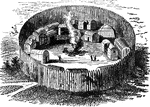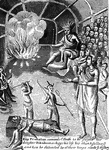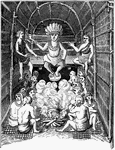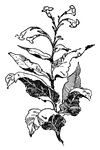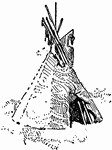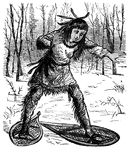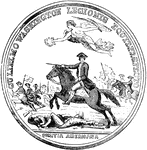
Washington Medal Front
"Silver medal awarded to Washington. The following are the device and inscriptions on the front: An…

Fort Watson
"Site of Fort Watson."—Lossing, 1851 The Siege of Fort Watson was an American Revolutionary War confrontation…
!["View from the site of Fort Cornwallis. Fort Cornwallis occupied the ground in the rear of the Episcopal church, now a grave-yard. This view is from within the inclosure, looking northeast, and includes a portion of Schultz's bridge, the Savannah River, and Hamburg upon the opposite bank. In the foreground is seen portions of the church-yard wall, and upon the brink of the river below are [African Americans] employed in placing bales of cotton upon the wharves for transportation to the sea-coast. The wharves are two stories in height, one to be used at low water, the other when the river is 'up.' There were remains of the ditch and embankments of the fort within the grave-yard when I was there; and the trench leading to the water-gate, where the 'Pride-of-India tree is seen, was very visible."—Lossing, 1851](https://etc.usf.edu/clipart/14100/14143/ft-cornwalli_14143_mth.gif)
Fort Cornwallis
"View from the site of Fort Cornwallis. Fort Cornwallis occupied the ground in the rear of the Episcopal…

Buffalo
"The Buffalo. As the game upon which they depended moved about the country, so the Indians roved in…

Agami
"A grallatorial bird, a native of South America, often called the golden-breasted trumpeter."-Whitney,…

Hale Statue
"Statue of Nathan Hale. It was during his treated that an event occurred which showed how much Americans…
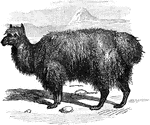
Alpaca
"A mammal, a native of the Andes, especially of the mountains of Chili and Peru."-Whitney, 1902
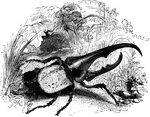
Hercules Beetle
"The hercules beetle is a native of Brazil, sometimes attaining a length of five inches." — Goodrich,…
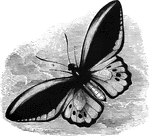
Priam Butterfly
"The Priam butterfly, Papilio priamus, is a native of the Eastern Archipelago; its wings are…
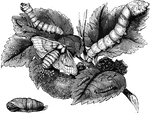
Silkworm Moth, Caterpillar, and Chrysalis
"This important insect is a native of the north of China; and a great portion of the supplies of silk…

Cacao Plant
"Cacao, or cocoa, is the chocolate tree, and also the powder and beverage made with it obtained from…
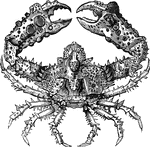
Parthenope horrida
"The Parthenope horrida, a native of the Atlantic and Indian Oceans, is covered with the most…
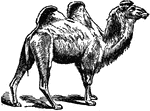
Camel
"Camel is a genus of ruminant quadrupeds, characterized by the absence of horns; a fissure in the upper…

Carp
"Carp is a fresh-water fish. It is a native of Asia, but has been extensively introduced into the United…

Head of Chameleon
"Chameleon is a genus of reptiles belonging to the Saurian or lizard-like order, a native of parts of…
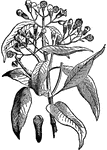
Cloves
"Cloves are a very pungent and aromatic spice, the dried flower-buds of a tree a native of the Molucca…

Coffee Plant
"Coffee is the seed of an evergreen shrub, which is cultivated in hot climates, and is a native of Abyssinia…
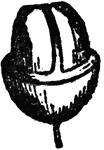
Coffee Bean
"Coffee is the seed of an evergreen shrub, which is cultivated in hot climates, and is a native of Abyssinia…
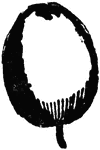
Coffee Bean
"Coffee is the seed of an evergreen shrub, which is cultivated in hot climates, and is a native of Abyssinia…

Date Palm
"Date Palm is a genus of palms, the most important species of which is the common date palm, the palm…
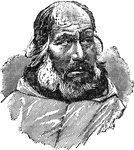
Eskimo Man
"Eskimo is the name of the inhabitants of the N. coast of the American continent down to lat. 60 degrees…

Goosander
"The Goosander is a web-footed bird in the duck family. The adult male, which measures 26 inches in…

Goosander
"The Goosander is a web-footed bird in the duck family. The adult male, which measures 26 inches in…
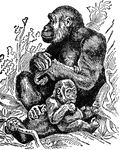
Female Gorilla
"The Gorilla is a celebrated anthropoid ape, generally belived to come nearer than any known one to…
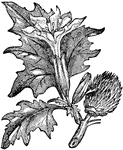
Thorn Apple
"Thorn Apple is a genus of plants. The common thorn apple is an annual plant, with smooth stem and leaves,…
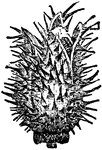
Thorn Apple Bud
"Thorn Apple is a genus of plants. The common thorn apple is an annual plant, with smooth stem and leaves,…

Double Tuberose
"Tuberose (Polianthus) is a genus of plants of the natural order Liliaceæ. The plant is in high…

Tussock Grass
"Tussock Grass is a large grass, same genus with the cock's-foot grass of the United States; native…

Umbrellabird
"The Umbrella Bird is a native of Peru. It is about the size of a crow, with deep black plumage; the…

Vicuna
"Vicuna is a native of the most elevated localities of Bolivia and northern Chile. It is very wild,…

Viper's Bugloss
"Viper's Bugloss is a genus of plants. The species are large herbaceous plants or shrubs, rough with…
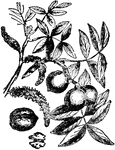
Walnut
"Walnut is a genus comprising seven or eight species of beautiful trees. The common walnut is a native…
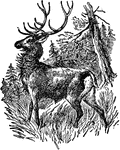
Wapiti
"Wapiti is the name given by the North American Indians to an animal, a native of North America, ranging…

Wart Hog
"The Wart Hog closely resembles the true hogs in most of their characters, and particularly in their…

Zebu
"Zebu is the native name for any breed or individual of Bos Indicus. The zebus attain their greatest…
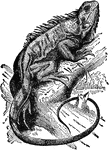
Iguana
"Iguana is a genus of saurian reptiles, natives of Brazil, Cayenne, the Bahamas, and neighboring localities…
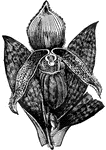
Lady's Slipper
"Lady's Slipper is a genus of plants. The genus is remarkable for the large inflated lip of the corolla.…

Myrtle
"Myrtle is a genus of plants, natural order Myrtaceæ, consisting of aromatic trees or shrubs,…
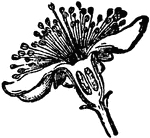
Myrtle Flower
"Myrtle is a genus of plants, natural order Myrtaceæ, consisting of aromatic trees or shrubs,…
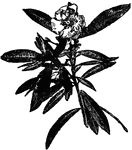
Oleander
"The Oleander is the common and sweet-scented oleander. They have lanceolate coriaceous leaves, with…
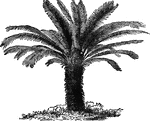
Cycas Revoluta Sago Palm
"Palm is a natural order of endogenous plants, the products of which are of extreme importance and utility…

Peruvian Indian
"Peru is a maritime republic of South America, bounded on the N. by Ecuador, on the W. by the Pacific,…

Lucian
"Lucian, the humorous satirist, was a native of Samosata, in Syria, and flourished towards the end of…

Water Rice
"Rice is a well known genus of grasses, having panicles of one-flowered spike-lets, with two very small…
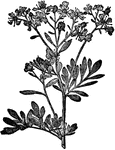
Rue
"The common rue is a half-shrubby plant, two or three feet high, of a fetid odor and an acrid taste.…

Hot Blast Smelting Furnace
"Smelting is the act or process of obtaining metal from ore by the combined action of heat, air, and…
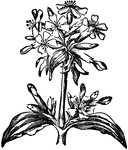
Soapwort
"Soapwort (Saponaria), a genus of plants of the natural order Caryophyllaceæ; so called because…

Spoonbill
"Spoonbill is the popular name of the birds of the genus Platalea, belonging to the heron family (Ardeidæ),…
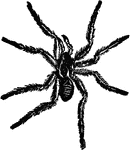
Tarantula
"The Tarantula is a large spider, with a body about an inch in length; its bite was formerly supposed…

Bust of Homer
"Of the Homeric poems the Iliad and the Odyssey were the most distinguished and have alone come down…

Carob Tree
Native to countries around the Mediterranean. The pods are often called locust-eans, are supposed by…


